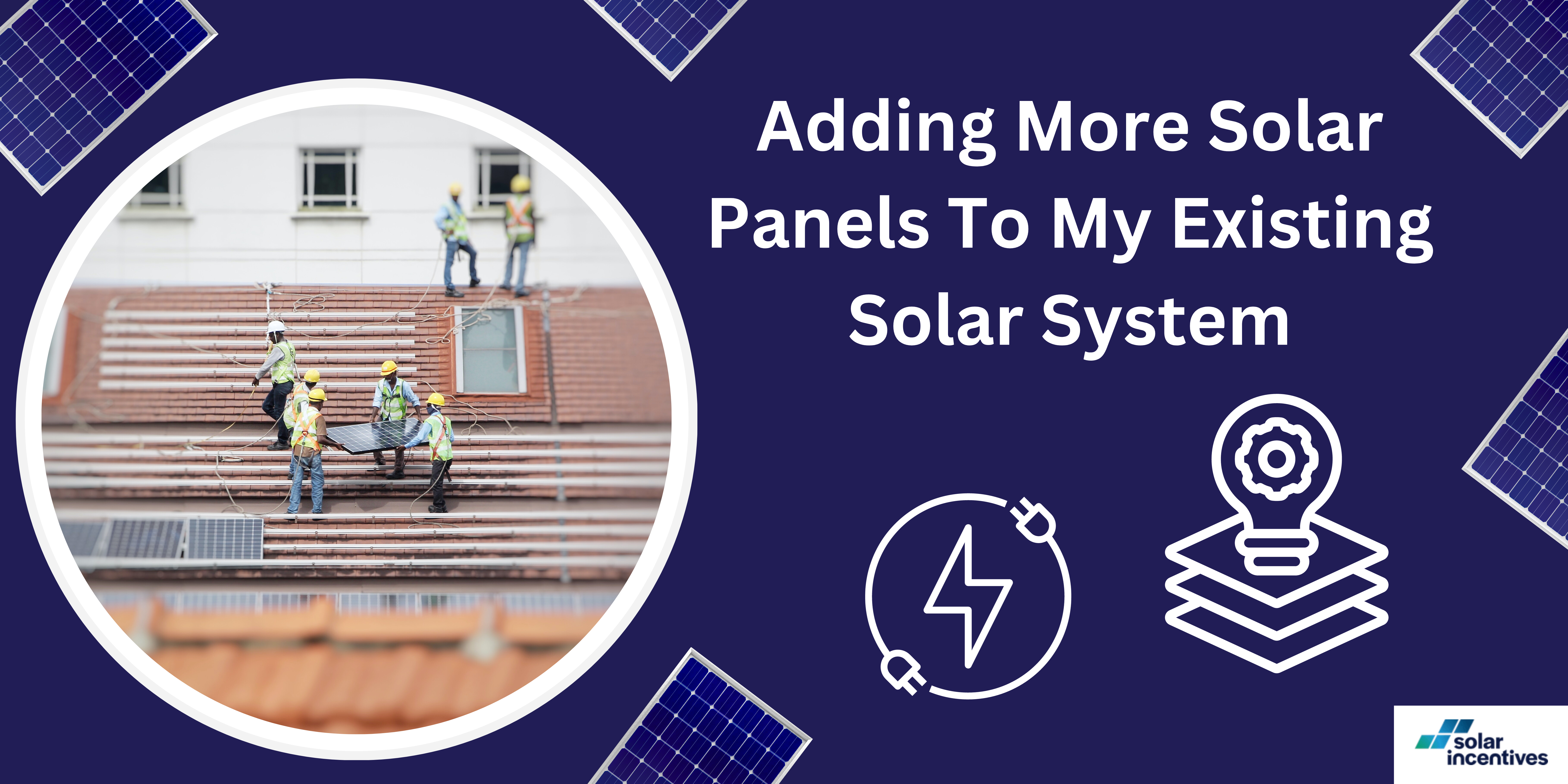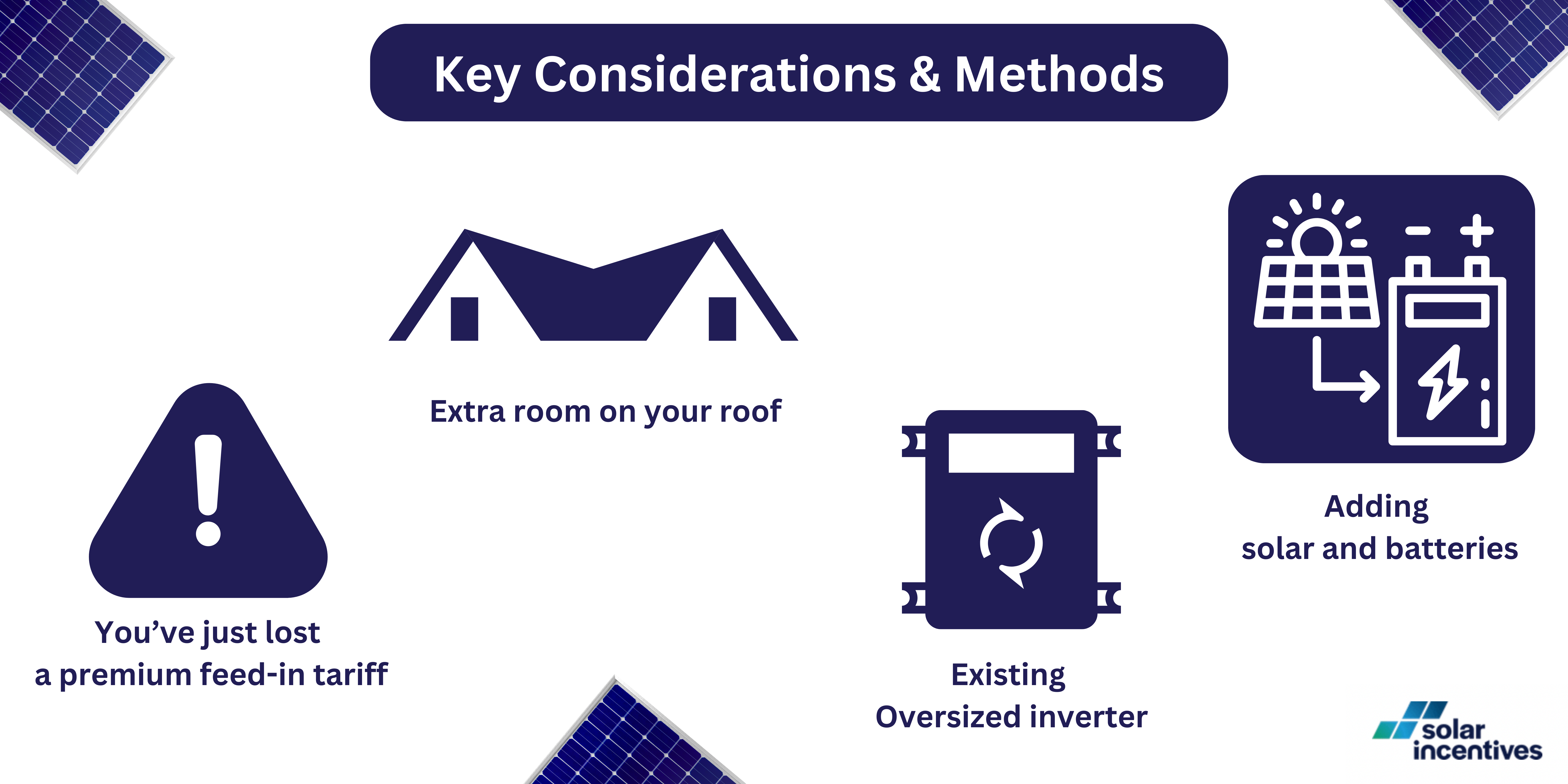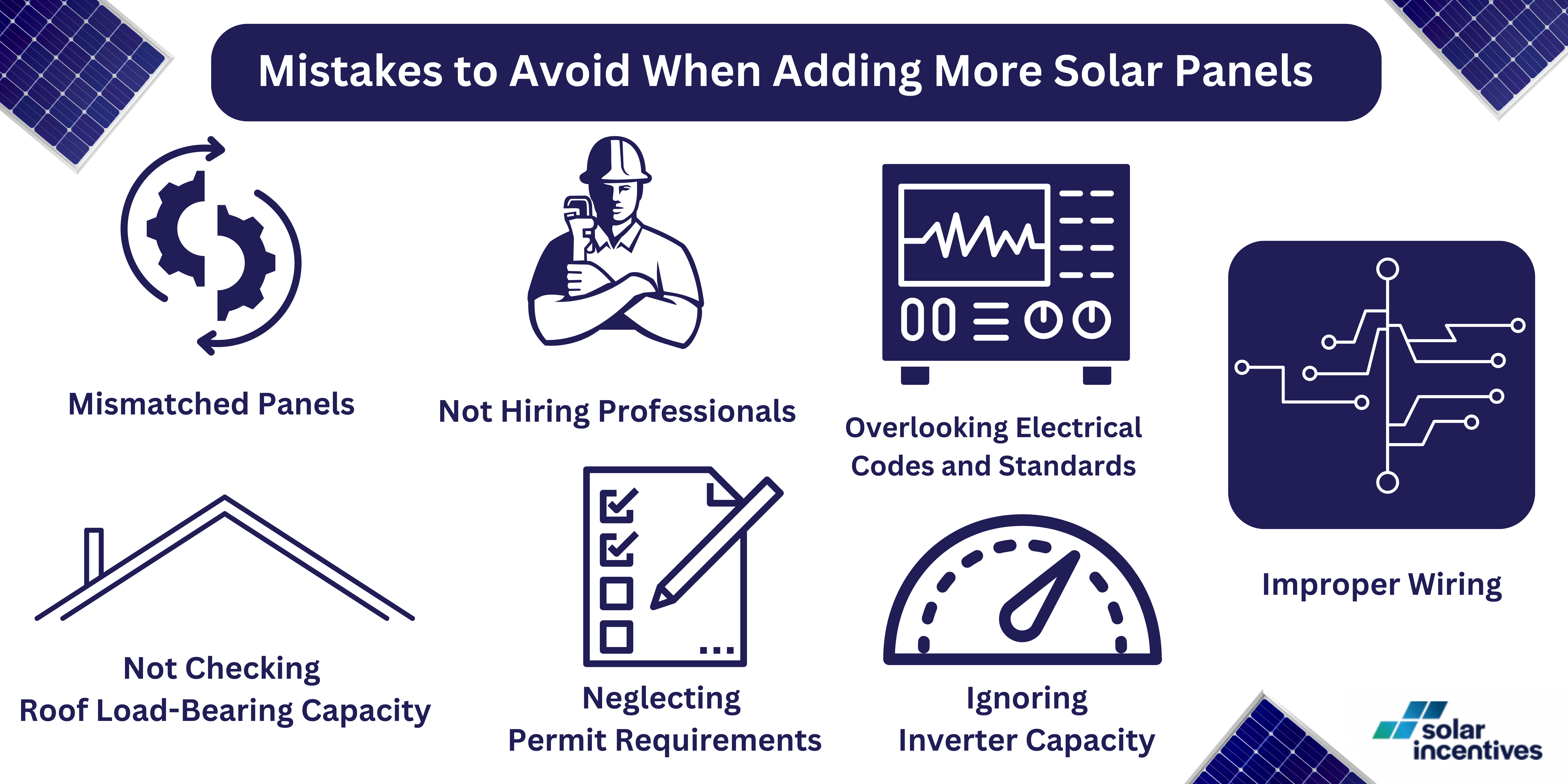Adding More Solar Panels To My Existing Solar System

Steve Hill
Expert in Residential and Commercial Solar Solutions and Energy Efficiency
4 min read · 18th September 2023
Some of the most common questions around Solar Panels are about adding solar panels to an existing solar PV system. Sounds like a simple matter, right?
However, adding more panels isn’t the same as your initial installation.
This article will help you decide when and how to add panels.
Expanding Your Solar System: Key Considerations & Methods

You’ve just lost a premium feed-in tariff
Many of the solar installations from last year were small, primarily because of the high costs of solar PV systems. These costs made premium feed-in tariffs essential to justify the investment.
Thankfully, things have changed. Solar PV systems are now cheaper, making it more affordable to go solar, even without significant feed-in tariffs.
However, many government-supported feed-in tariff initiatives specified that expanding current solar systems could result in losing their tariff benefits.

In this situation, there are several options:
Add a brand new solar system alongside the existing one
Consider installing a completely new solar system next to the one you already have.
This could be the simplest and most budget-friendly choice, especially if the inverter from your current setup is younger than 5 years.
Replace your current inverter with a bigger one and incorporate extra panels.
While solar panels typically last for about 25 years, inverters usually need a replacement around their 10th year. If your inverter is over 5 years old and you’re adding panels, consider getting a bigger one.
Adding more panels
For those with an extra-capacity inverter, consider adding more panels.
Obviously, this is only an option for those homes that have an inverter with room for more.
Add on microinverters for more panels
With microinverters, there’s no need for a central inverter, allowing the addition of even just a single panel. You can also opt for ‘smart modules’—solar panels that come with a built-in microinverter.
Remember, microinverters can be better for shady areas but might cost more per panel than a regular central inverter.
Extra room on your roof?
If you got your solar system recently and aren’t getting big state solar discounts, you can add more panels as you like, depending on your budget.
Existing Oversized inverter
If you have a big inverter and you’re thinking of adding more solar panels, here’s what you need to know:
- Big inverters can be tricky. They have special slots called MPPTs that help get the most energy from your panels.
- If your inverter has just one MPPT slot, any new panels you add must match your old ones. If they don’t, your solar system might not work as well.
- If you have more than one MPPT slot, it’s easier to add new panels. But you have to make sure one of those slots isn’t already in use.
- To find out if you have a free slot, you can ask the person who set up your solar system or get a professional to check.
- Remember, if your new panels look different from the old ones, they might not look as nice on your roof.
Adding solar and batteries
Many people are getting extra solar panels and batteries. This is because having both can give you more power and save you more money.
But how you add them can be done in different ways. Here are the main ways:
Swap out the existing inverter with a ‘hybrid’ inverter and add more panels
A hybrid inverter can handle both solar panels and batteries. If your old inverter needs replacing, a bigger hybrid one could be a simple and affordable choice for adding more panels and batteries.
Replace the existing inverter* with a larger inverter, add panels & add batteries on a separate inverter
You don’t need a hybrid inverter to add batteries. A technician can put in a bigger inverter, add panels, and then connect batteries using a separate battery inverter.
Add a second solar PV system along with batteries
If your current inverter is under 5 years old, you might consider adding a new solar system alongside the one you already have.
Another option is to use three different inverters: one for your old solar system, one for the new solar system, and one just for the battery. However, this method might end up costing you more money.
Add more panels with micro inverters & batteries on separate inverter(s)
Another option is a modular approach using microinverters, where panels are added on as needed, each with its own small inverter.
Add batteries and put the additional panels ‘behind’ the battery inverter
Some battery products let you add panels directly to them, charging the batteries without using an inverter, which can save energy. But, it’s best to use all the energy your solar panels can produce, so choose a battery that works well with the power from your current setup.
Mistakes to Avoid When Adding More Solar Panels to an Existing Solar System

Adding more solar panels to an existing solar system can help increase the overall efficiency and output of your system.
However, several potential mistakes can hinder the performance or lead to other problems. Here are some mistakes to avoid when expanding your solar installation:
Mismatched Panels
It’s best if the new panels match the old ones in things like voltage, current, and power. Mixing different types of panels can cause issues and make the system less efficient.
Ignoring Inverter Capacity
Make sure your inverter can manage the power from all the panels combined. If you’re adding extra panels, check if your inverter can handle the added power. If not, it might be time for an upgrade.
Not Checking Roof Load-Bearing Capacity
Before adding more panels, ensure that your roof can handle the additional weight, especially if it’s an older structure.
Overlooking Electrical Codes and Standards
Always follow local electrical rules and safety guidelines when adding to a solar system. Ignoring this can lead to dangerous setups.
Neglecting Permit Requirements
In many locations, adding more panels may require you to get an additional permit or modify your existing permit.
Improper Wiring
Be careful when connecting panels. Wiring panels in a line (series) increases voltage, while side-by-side (parallel) raises the current. Make sure your system can handle these changes.
Placement Matters for Panels
Put new panels where they get steady sunlight without shadows. Think about the best angle and direction to get the most energy. Here are some tips on Dealing with Solar Panels in Shaded Areas.
Ignoring System Monitoring
After adding panels, check the system to make sure all panels work well and it produces the expected energy.
Forgetting about Warranty Implications
Sometimes, adding panels or making changes to an existing system can void the warranty. Check with the product manufacturers and your installation company before making modifications.
Mismatched System Components
Make sure all components, like mounting hardware and connectors, work with both old and new parts of the system, not just the panels.
Not Hiring Professionals
If you’re unsure about the process, hire a professional solar installer. Doing it yourself without proper knowledge can result in inefficiencies, damage, or unsafe conditions.
Failing to Reevaluate Energy Needs
Before expanding, review your current and anticipated energy needs. This will help ensure that the addition is necessary and that you’re optimizing for future usage.
Neglecting Maintenance
With more panels, there’s a higher need for regular maintenance. Ensure that all parts of your system, old and new, are checked and maintained regularly.
Overlooking Financial Incentives
Some regions offer financial incentives for solar installations. When expanding your system, check if you’re eligible for any grants, tax breaks, or rebates.
To make sure your larger solar system works well and stays safe, be aware of those possible problems.
Conclusion
Adding more panels to your current solar system is a smart move that can help you use more green energy and possibly cut down your electricity bills.
But, you’ll need to check your current setup, know the rules in your area, and make sure everything fits together.
With the right advice from Solar Incentives and avoiding common errors, you can boost your solar power and work towards a greener future.
Article By
Steve Hill
Steve Hill has a rich background in the solar energy sector and is dedicated to empowering consumers with knowledge, particularly in residential and commercial solar solutions, solar batteries, and energy efficiency products.
Steve enjoys sharing his wealth of experience, offering practical advice, and learning about the latest trends and innovative solutions in the world of solar energy.

